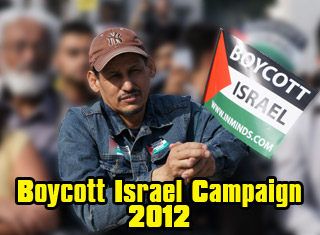
 Innovative Minds © 2014. All Rights Reserved. www.inminds.co.uk | ||||
Opposing the architects of the occupationEsther Zandberg
Architects and Planners for Justice in Palestine calls on Israeli architects and planners to put an end to being "partners in social, political and economic oppression" in the occupied territories, "which violates the professional ethics acceptable to all."
About 200 British and Israeli architects and academics, including people of international renown, have signed a manifesto initiated by the British organization Architects and Planners for Justice in Palestine, which calls on Israeli architects and planners to put an end to being "partners in social, political and economic oppression" in the occupied territories, "which violates the professional ethics acceptable to all." The manifesto points to three representative projects currently promoted by the planning authorities: the master plan for the E1 region between the settlement of Ma'aleh Adumim and Jerusalem, which will prevent Palestinian territorial contiguity; construction in Silwan in East Jerusalem, which involves the demolition of dozens of homes; and a plan to build a luxury neighborhood on the remains of the former Palestinian village of Lifta. The organization considers participation in these projects, construction in the occupied territories and any planning in Israel that involves discrimination and repression, to be a blatant violation of international conventions, which require professional and ethical responsibility for the social and environmental consequences of planning and construction work. The organization has sent letters on the subject to the International Architects Association and to the Israel Association of United Architects. It has also turned to Jerusalem Mayor Uri Lupolianski and to Minister of Construction and Housing Meir Sheetrit on the matter. The British organization has been trying for a long time to arouse international awareness on the subject. About two years ago it initiated a boycott against the Israeli architectural community, which does not forbid its members from being involved in the kind of planning and construction the organization defines as unethical. Prior to the opening of the International Architecture Biennale in Venice last September, the organization tried to prevent the presentation of the Israeli exhibition "Life Saver: Typology of Commemoration in Israel," which dealt with the architecture of commemoration, ignoring the Palestinian side. The initiatives did not result in any kind of action, and the architectural community in Israel continues to bury its head in the sand. Among the signatories to the manifesto, which was initiated by architect Abe Hayeem, the chair of Architects and Planners for Justice in Palestine, are architectural historian Charles Jencks; president of the Institute of Royal British Architects Jack Pringle; American sociologist Saskia Sassen; geographer Oren Yiftachel of Ben-Gurion University in the Negev; and architects Will Alsop of Britain, Zvi Hecker of Israel and Berlin, Yaron Turel of Israel, as well as Israeli Zvi Efrat, who heads the architecture department at the Bezalel Academy of Art and Design. The manifesto was published in The Times of London and in the British architectural journal Building Design. A new book by architect Eyal Weizman, called "Hollow Land: Israel's Architecture of Occupation," has recently been published in Britain. Weizman, who is among the signatories of the manifesto, was one of the first to point an accusing finger at the Israeli planning community for cooperating, through both silence and action, with a policy of repression and occupation, and placed the subject on the agenda of international architectural discourse. Source: http://www.haaretz.com/hasen/spages/863814.html Also Of InterestPage URL: http://www.inminds.co.uk/article.php?id=10109
|
|
Support Us
If you agree with our work then please support us.Campaigns INMINDS Facebook Live Feed Latest Video's
INMINDS Twitter Feed Tweets by @InmindsComFeatured Video's
You need Flash player 8+ and JavaScript enabled to view this video.
[all videos (over 200)..] Featured MP3 Podcast  "Everywhere we went (in Gaza) the same question was on every body's lips - 'You are here but where are the Arabs?' One little girl said to me 'where is this Arab world that they teach us about in school? Where is this Ummah that they talk to us about on Fridays? Why did they leave us alone?'. That's what she said to me, with tears in her eyes 'why did they leave us alone?' I had to turn my face away from her when she said it, and I'm not an Arab, I had to turn away.. I couldn't face her in the face of such a question.." Leader of Viva Palestina aid convoy to Gaza US tour hosted by Al-Awda, April 2009 [71min / 56Mb] [all podcasts..] Newsletter Feedback |
 |
 |
















































